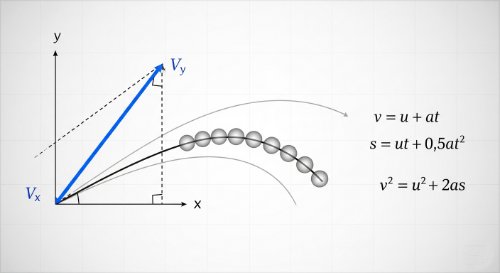Welcome - Introduction | Kinematics: Motion in One and Two Dimensions - Physics (Undergraduate Foundation)
SPONSORED Get Personalized Tutoring NowStruggling with a tough concept or looking to advance your skills? Our expert tutors offer one-to-one guidance tailored to your unique needs.
Get instant support, clear explanations, and practical strategies to master even the most challenging subjects. With flexible scheduling and customized learning plans, success is just a session away.
Book your personalized tutoring today and start achieving your academic goals!
Get Personalized Tutoring NowStruggling with a tough concept or looking to advance your skills? Our expert tutors offer one-to-one guidance tailored to your unique needs.
Get instant support, clear explanations, and practical strategies to master even the most challenging subjects. With flexible scheduling and customized learning plans, success is just a session away.
Book your personalized tutoring today and start achieving your academic goals!
Struggling with a tough concept or looking to advance your skills? Our expert tutors offer one-to-one guidance tailored to your unique needs. Get instant support, clear explanations, and practical strategies to master even the most challenging subjects. With flexible scheduling and customized learning plans, success is just a session away. Book your personalized tutoring today and start achieving your academic goals!
 Kinematics: Motion in One and Two Dimensions - Physics (Undergraduate Foundation)Motion is the most fundamental concept in physics. This course provides the mathematical framework to describe it with quantitative precision. We will systematically analyse motion in one, two, and three dimensions, progressing from motion along a straight line to the vector analysis of projectiles and general spatial motion. This requires a full command of both vector algebra and introductory calculus.
The principles of kinematics are the bedrock of physical analysis, engineering design, and biomechanics. This knowledge is required to analyse everything from vehicle performance and projectile trajectories to the movement of organisms and robotic motion. A command of this material is essential for any work involving the dynamics of moving systems, providing the tools to predict and control motion in the real world.
Upon completion, you will be able to analyse motion in multiple dimensions. You will solve one-dimensional problems using the standard kinematic equations for constant acceleration. You will analyse two-dimensional projectile motion by resolving vectors into independent components. Critically, you will use vector calculus to describe the general case of motion with variable acceleration.
This course is designed for first-year university students of the physical, biological, and medical sciences, as well as engineering and computer science. A firm command of vector algebra and introductory calculus (differentiation and integration) is a mandatory prerequisite. This material is the necessary foundation for the subsequent study of Newtonian dynamics and biomechanics.
Kinematics: Motion in One and Two Dimensions - Physics (Undergraduate Foundation)Motion is the most fundamental concept in physics. This course provides the mathematical framework to describe it with quantitative precision. We will systematically analyse motion in one, two, and three dimensions, progressing from motion along a straight line to the vector analysis of projectiles and general spatial motion. This requires a full command of both vector algebra and introductory calculus.
The principles of kinematics are the bedrock of physical analysis, engineering design, and biomechanics. This knowledge is required to analyse everything from vehicle performance and projectile trajectories to the movement of organisms and robotic motion. A command of this material is essential for any work involving the dynamics of moving systems, providing the tools to predict and control motion in the real world.
Upon completion, you will be able to analyse motion in multiple dimensions. You will solve one-dimensional problems using the standard kinematic equations for constant acceleration. You will analyse two-dimensional projectile motion by resolving vectors into independent components. Critically, you will use vector calculus to describe the general case of motion with variable acceleration.
This course is designed for first-year university students of the physical, biological, and medical sciences, as well as engineering and computer science. A firm command of vector algebra and introductory calculus (differentiation and integration) is a mandatory prerequisite. This material is the necessary foundation for the subsequent study of Newtonian dynamics and biomechanics.
Motion is the most fundamental concept in physics. This course provides the mathematical framework to describe it with quantitative precision. We will systematically analyse motion in one, two, and three dimensions, progressing from motion along a straight line to the vector analysis of projectiles and general spatial motion. This requires a full command of both vector algebra and introductory calculus. The principles of kinematics are the bedrock of physical analysis, engineering design, and biomechanics. This knowledge is required to analyse everything from vehicle performance and projectile trajectories to the movement of organisms and robotic motion. A command of this material is essential for any work involving the dynamics of moving systems, providing the tools to predict and control motion in the real world. Upon completion, you will be able to analyse motion in multiple dimensions. You will solve one-dimensional problems using the standard kinematic equations for constant acceleration. You will analyse two-dimensional projectile motion by resolving vectors into independent components. Critically, you will use vector calculus to describe the general case of motion with variable acceleration. This course is designed for first-year university students of the physical, biological, and medical sciences, as well as engineering and computer science. A firm command of vector algebra and introductory calculus (differentiation and integration) is a mandatory prerequisite. This material is the necessary foundation for the subsequent study of Newtonian dynamics and biomechanics.
![[NUC Core] PHY 101: General Physics I - Mechanics](https://media.unidrills.com/avatars/learningTrack/TPTv7atESYrpFBX7Xsgc.JPEG) [NUC Core] PHY 101: General Physics I - MechanicsThis learning track provides a complete and rigorous treatment of introductory classical mechanics as specified by the NUC Core Curriculum. It is structured to build a comprehensive analytical framework, starting with the mathematical description of motion (kinematics) and progressing through its causes (Newtonian dynamics), the powerful conservation laws, the dynamics of rotating systems, and finally, the principles of universal gravitation. Mastery of this material is the non-negotiable foundation for all subsequent study in physics and engineering.
The principles of classical mechanics are the operational language for analysing the physical world. This track provides the essential toolset for solving problems in every field of engineering, from aerospace to civil, and for understanding phenomena from the trajectory of a projectile to the orbits of planets. By the end of this track, you will be able to analyse motion using vectors and calculus, apply Newton's laws to solve any standard dynamics problem, use conservation laws to analyse complex systems and collisions, analyse rotational motion, and solve problems in celestial mechanics.
This learning track is a mandatory prerequisite for all first-year university students of physics, engineering, and related physical sciences. It provides the foundational knowledge required for all subsequent courses in mechanics, electromagnetism, thermodynamics, and modern physics.
[NUC Core] PHY 101: General Physics I - MechanicsThis learning track provides a complete and rigorous treatment of introductory classical mechanics as specified by the NUC Core Curriculum. It is structured to build a comprehensive analytical framework, starting with the mathematical description of motion (kinematics) and progressing through its causes (Newtonian dynamics), the powerful conservation laws, the dynamics of rotating systems, and finally, the principles of universal gravitation. Mastery of this material is the non-negotiable foundation for all subsequent study in physics and engineering.
The principles of classical mechanics are the operational language for analysing the physical world. This track provides the essential toolset for solving problems in every field of engineering, from aerospace to civil, and for understanding phenomena from the trajectory of a projectile to the orbits of planets. By the end of this track, you will be able to analyse motion using vectors and calculus, apply Newton's laws to solve any standard dynamics problem, use conservation laws to analyse complex systems and collisions, analyse rotational motion, and solve problems in celestial mechanics.
This learning track is a mandatory prerequisite for all first-year university students of physics, engineering, and related physical sciences. It provides the foundational knowledge required for all subsequent courses in mechanics, electromagnetism, thermodynamics, and modern physics.
This learning track provides a complete and rigorous treatment of introductory classical mechanics as specified by the NUC Core Curriculum. It is structured to build a comprehensive analytical framework, starting with the mathematical description of motion (kinematics) and progressing through its causes (Newtonian dynamics), the powerful conservation laws, the dynamics of rotating systems, and finally, the principles of universal gravitation. Mastery of this material is the non-negotiable foundation for all subsequent study in physics and engineering. The principles of classical mechanics are the operational language for analysing the physical world. This track provides the essential toolset for solving problems in every field of engineering, from aerospace to civil, and for understanding phenomena from the trajectory of a projectile to the orbits of planets. By the end of this track, you will be able to analyse motion using vectors and calculus, apply Newton's laws to solve any standard dynamics problem, use conservation laws to analyse complex systems and collisions, analyse rotational motion, and solve problems in celestial mechanics. This learning track is a mandatory prerequisite for all first-year university students of physics, engineering, and related physical sciences. It provides the foundational knowledge required for all subsequent courses in mechanics, electromagnetism, thermodynamics, and modern physics.